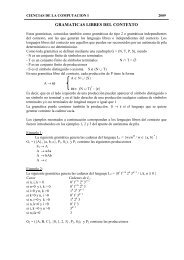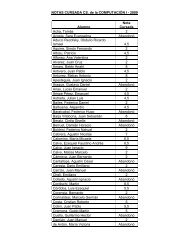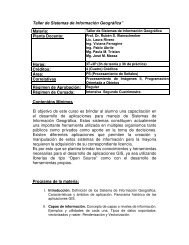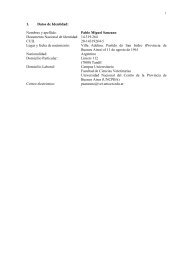Libro de Resúmenes / Book of Abstracts (Español/English)
Libro de Resúmenes / Book of Abstracts (Español/English)
Libro de Resúmenes / Book of Abstracts (Español/English)
You also want an ePaper? Increase the reach of your titles
YUMPU automatically turns print PDFs into web optimized ePapers that Google loves.
Resumenes 122<br />
azedarach) in El Palmar National Park Using ETM Landsat<br />
images<br />
El Palmar National Park (EPNP) is a 8400 Ha relict <strong>of</strong> temperate<br />
savannas <strong>of</strong> Butia yatay palms with serious conservation threats due to<br />
exotic woody expansion, mainly produced by chinaberry (Melia azedarach).<br />
In this presentation we assess the ability <strong>of</strong> several supervised machine<br />
learning approaches to <strong>de</strong>tect the stage <strong>of</strong> invasion from Landsat ETM<br />
spectral data.<br />
Data were compiled from non-differencial GPS located vegetation<br />
samples, which were classified as not-inva<strong>de</strong>d, incipient and established,<br />
according to the presence and relative age <strong>of</strong> Melia trees. Spectral data for<br />
these locations were extracted from two Landsat ETM radiometric and<br />
geometrically calibrated images, corresponding to winter 2000 and summer<br />
2001. A 3x3 pixel window was used to reduce the effect <strong>of</strong> positional errors.<br />
Five different learning approaches were used: Naive Bayes, k-nearest<br />
neighbors (k-nn), C4.5 <strong>de</strong>cision trees, Jrip rules, and a backpropagation<br />
thrilayered perceptron neural net. Performance was evaluated using ROC<br />
curves, confusion matrices, total positive rate and total false positive rate.<br />
The following variables resulted selected as indicators <strong>of</strong> invasion<br />
stage: summer-winter differences in the near infrared spectral reflectance,<br />
NDVI, SAVI and NDWI; summer reflectance in the blue region, and winter<br />
reflectance in the middle infrared. Not-inva<strong>de</strong>d and established stages could<br />
be i<strong>de</strong>ntified by all methods with greater than 70% confi<strong>de</strong>nce. The incipient<br />
stage instead, which is the most critical in terms <strong>of</strong> park management<br />
<strong>de</strong>cisions, was <strong>de</strong>tected with acceptable performance only by 1-nn and<br />
neural nets with very long training periods. The use <strong>of</strong> k-nn as classification<br />
algorithm in satellite image processing looks promising because it is both<br />
easy to implement for semestral monitoring, and to interpret conceptually<br />
by park managers.



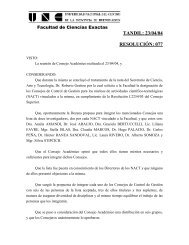
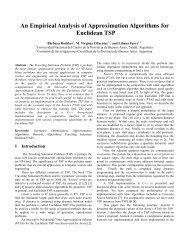
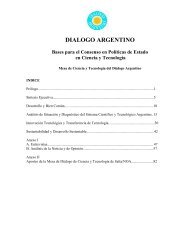
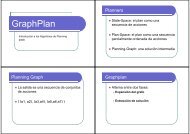
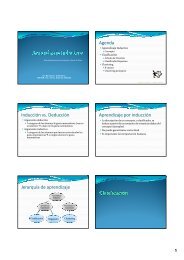
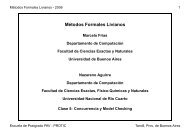
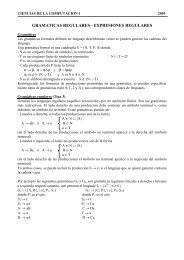

![Clase 13 [pdf]](https://img.yumpu.com/19616969/1/190x245/clase-13-pdf.jpg?quality=85)

